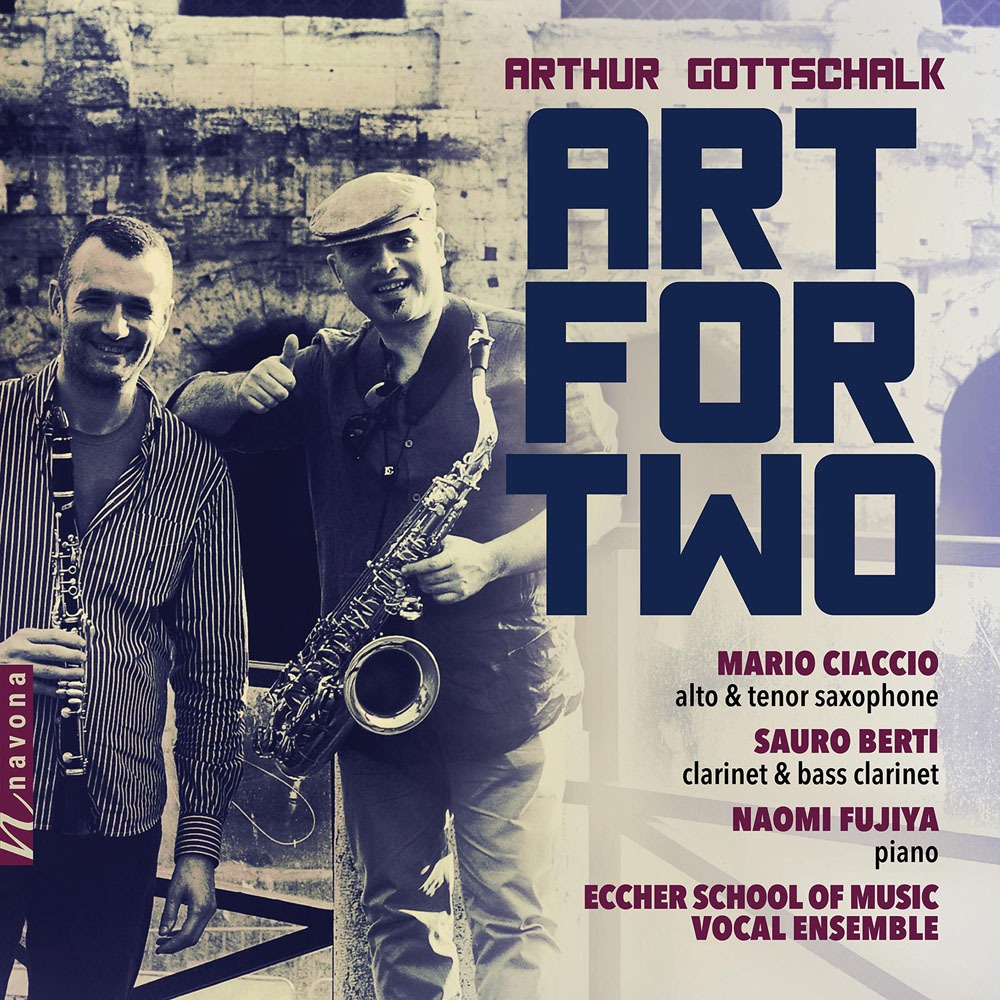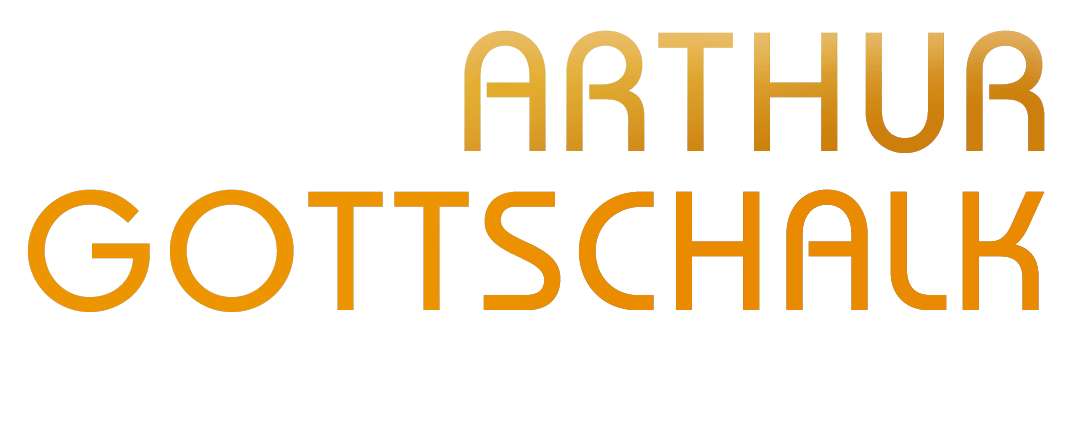
Fanfare Magazine Review: ART FOR TWO
Originally Published By: Fanfare Magazine
Contemporary music is a borderless country, which leaves few –isms to follow and all of music history to serve as inspiration. You’d think we’d be swamped with diversity, but almost the opposite seems to be true—hearing a distinctive voice is rare, which suggests why there was security in belonging to a defined mode like Romanticism, Neoclassicism, or the 12-tone system. In whatever ways this entertaining disc of music by the California-born composer Arthur Gottschalk might appeal to listeners, I was impressed by the light-hearted way he cuts his own path through the borderless land—he composes with deftness, ingenuity, and a taste for whimsy, never breaking a sweat.
Gottschalk’s unbuttoned imagination and natural flair are immediately evident in Benny, Zoot and Teddy, a trio for clarinet, saxophone, and piano that opens the program. I can decipher the title as a reference to a famous jazz clarinetist (Benny Goodman), sax man (Zoot Sims), and pianist (Teddy Wilson), which serves both to suggest and mislead. Influence isn’t imitation. Gottschalk’s idiom seems on paper to be a magpie’s horde. There are traces of Minimalism and boogie-woogie, stride piano and Dave Brubeck’s moto perpetuo style of jazz, plus whatever is intended in the subtitle (play Richard and Lorenz) that points to Rodgers and Hart. But the music isn’t a mélange. It is its own infectious self, ruled over by a restless ingenuity that brings changeups every few bars. The effect is somewhere between a riff and a romp.
Gottschalk was born in 1962 and is now a professor at the music school of Rice University in Houston; his personal memories lie close to all of those influences growing up, one supposes. In this album he focuses on the sonorities of saxophone and clarinet, with evocations of where those instruments have traveled. In the Sonata for Alto Saxophone and Piano, the opening Allegro is like Prokofiev in manic mode, landing unexpectedly on a waltz that could be from a Shostakovich film score. The second-movement “Waltz Nocturne” evokes a rainy day Italian movie score by Nino Rota, while the finale, “Bravura!,” shows off rapid passagework like an étude set against a walking bass. We’re talking about hinted-at associations, not outright borrowings. The music speaks its own language exuberantly.
Gottschalk favors the art that conceals art, as indicated in the throwaway casualness of the title Oh, More or Less, a duo for tenor saxophone and bass clarinet, two very mellow customers. When I was a feeble clarinetist, I ran across a musical palindrome that fascinated me. The piece was a single sheet of music laid between the two performers facing each other, one playing the music the right way up, the other the wrong way up, crossing in the middle. Oh, More or Less has that kind of mirroring effect as the two instruments, playing quick, closely matched passagework, are entwined.
Gottschalk has a decided knack for what sits well on these woodwinds and the kind of fun players like to have. The Sonata for Bass Clarinet and Piano allows a staid and fairly gloomy instrument to break out. The first movement, “Overture,” “Salt Peanuts Memorial Barbeque,” is based on fast-running scales against staccato chords, allowing the bass clarinet to show its nimbleness. The second movement, “Motet—Ancient Incantations,” outfits the piano with a one-finger drip-drop, against which the soloist sings a mournful film-noirish lament. The regular clarinet in Bhas a low, purring register known as chalumeau that is extended into the growl being exploited here. The finale, “Green Dolphin Street Boogie,” is amusingly incongruous because the bass clarinet is asked to swing like a sax, complete with “One, two, three, four” called out at the beginning and drumming finger taps to break up the beat. All told, a winning, ingenious composition.
More unexpected yet, and perhaps unique, is Shalom, which calls upon tenor saxophone, bass clarinet, and choir. The vocal line in Hebrew is given in modal, hymnal mode while the two woodwinds, starting with agitated double trills, evolve into an evocation of cantorial singing at synagogue. The combined effect is haunting and very different from everything else on the disc. The slimline cardboard packaging includes no program notes but has bios on clarinetist Sauro Berti and saxophonist Mario Ciaccio, both of whom lead distinguished careers in Italy. Also based in Italy is the accomplished pianist, Naomi Fujiya, and Rome is where the recordings were made.
I’ve tried to give a sense of Gottschalk’s idiom (if I was more with it, I might have spotted where Frank Zappa, mentioned as an inspiration, figured in), but since he is credited with hundreds of compositions, no doubt this is just one of his voices. That Gottschalk has a voice is much to be valued, and here it comes through in the most gleeful, insouciant way, ending on a prayer.
Huntley Dent
Related Articles
- April 17, 1994

